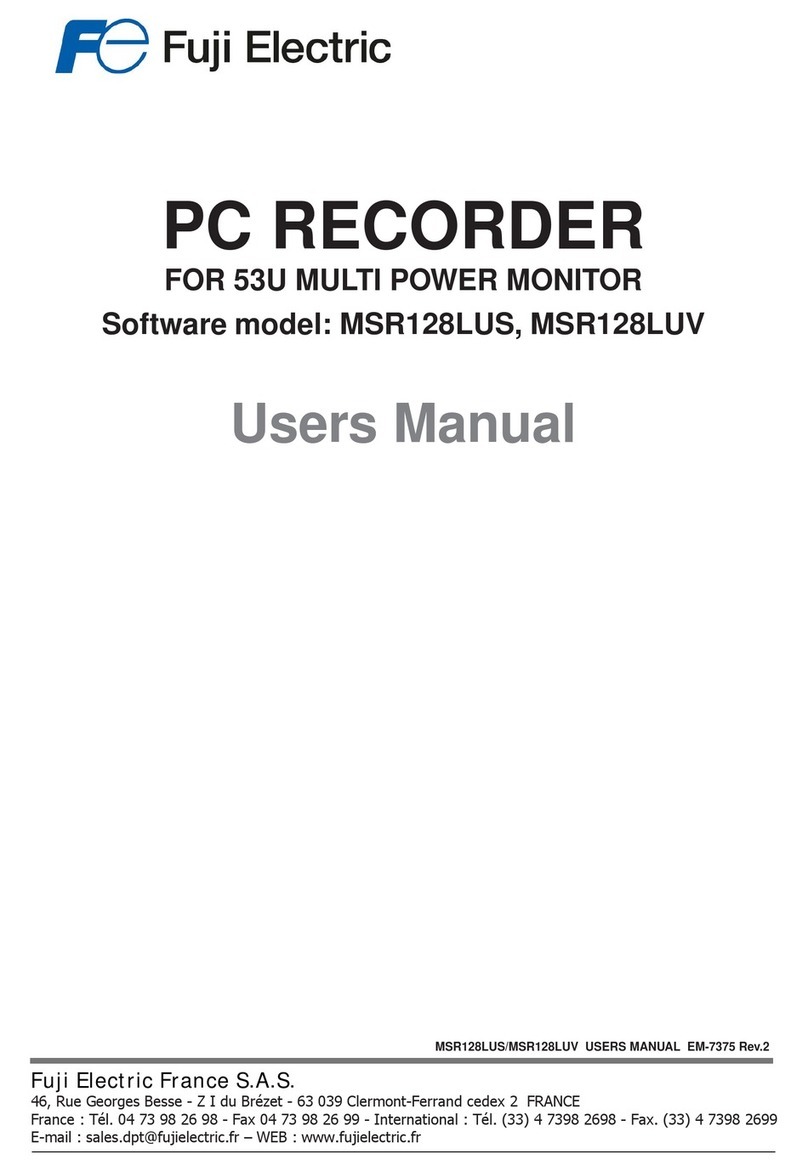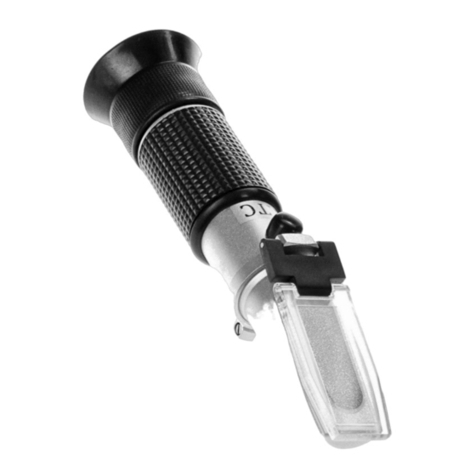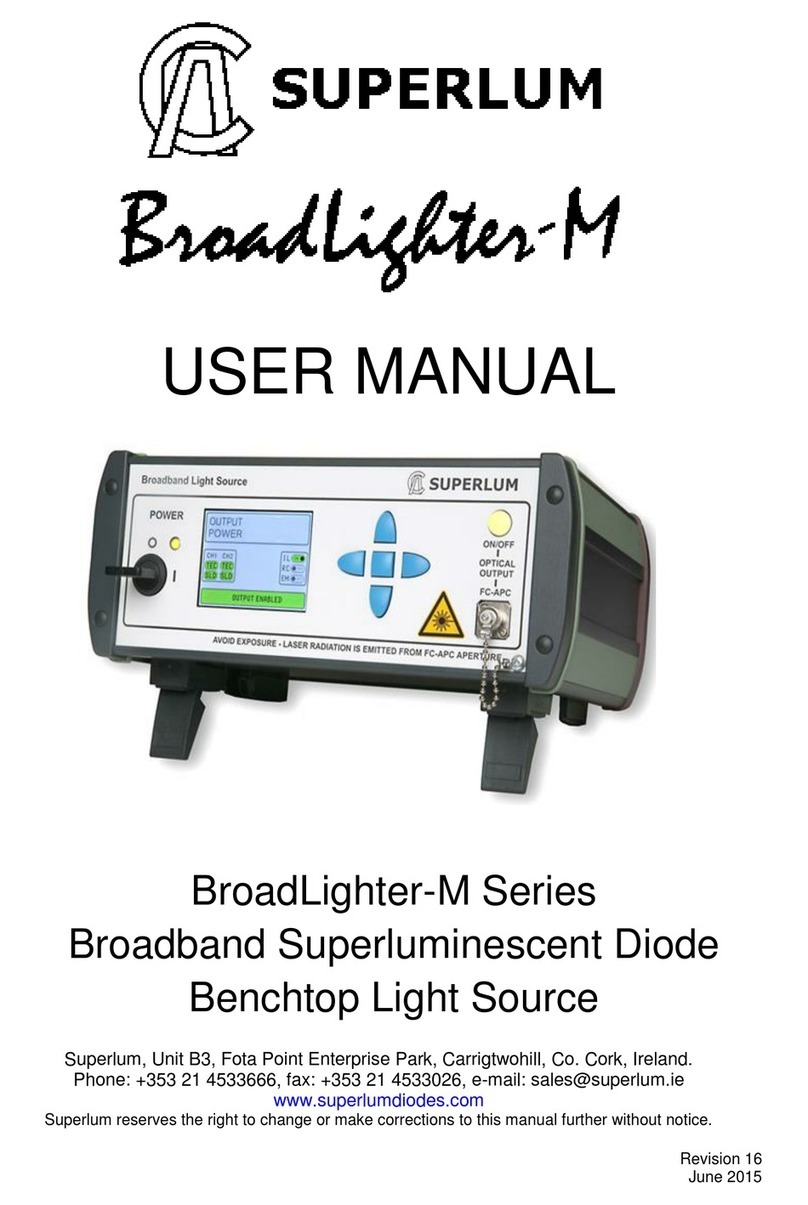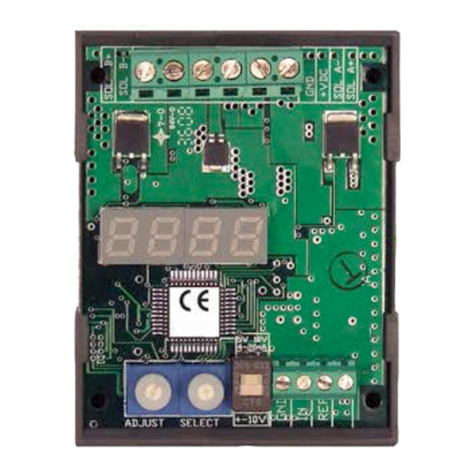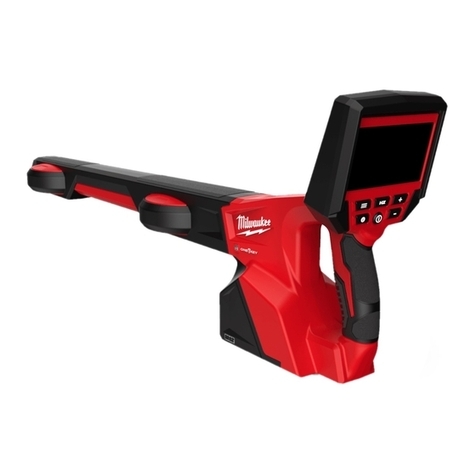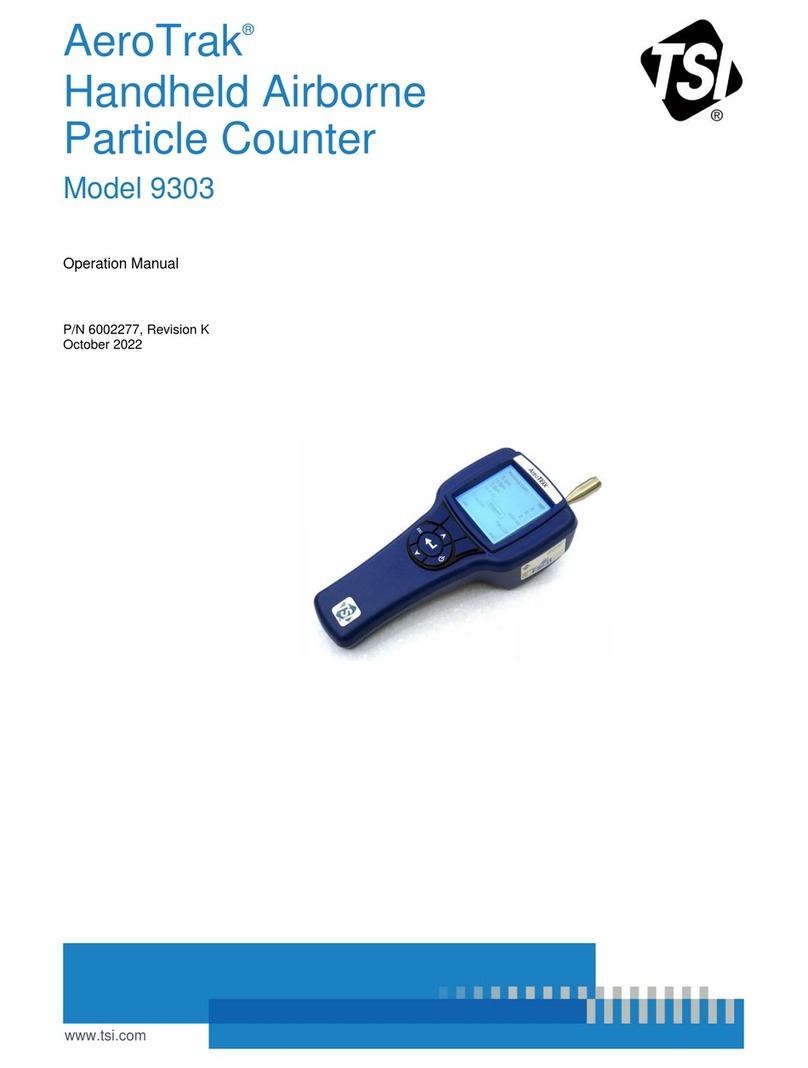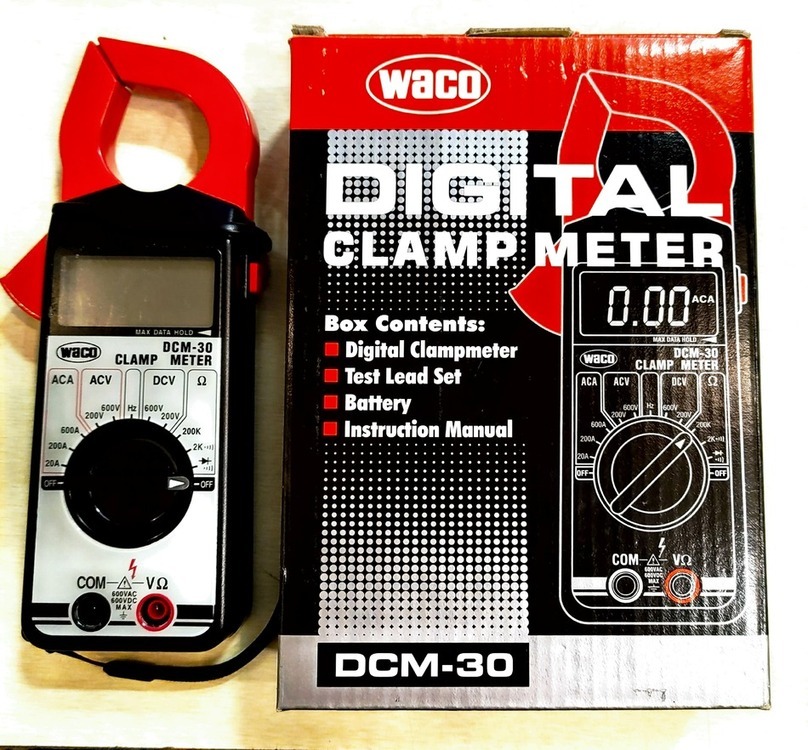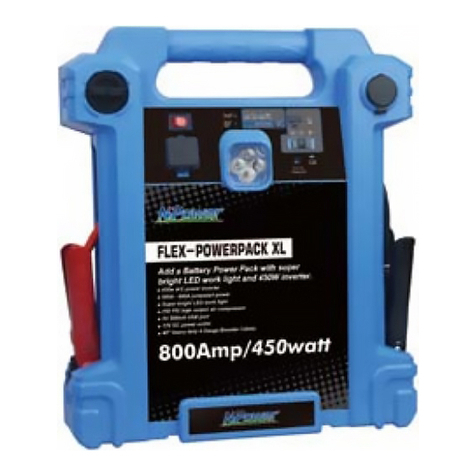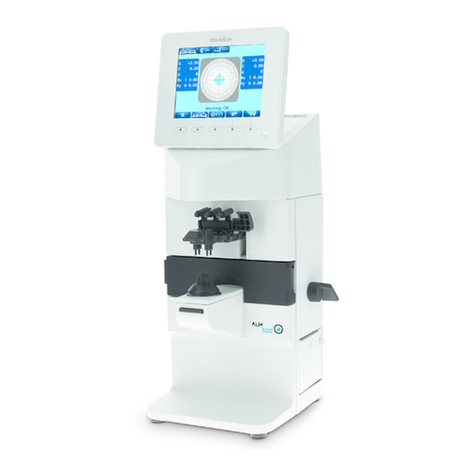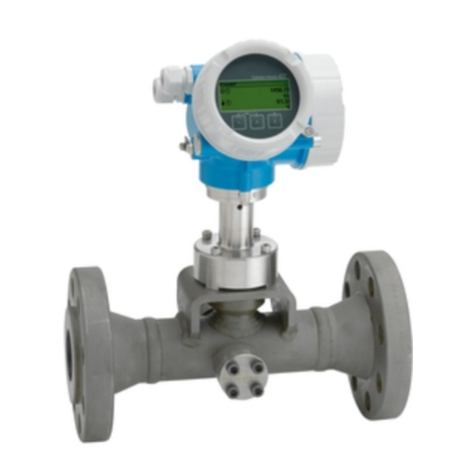FE PHW User manual

– 1 –
Confirming Specifications and Accessories ................... 1
Related Information ........................................................ 1
Please Read First........................................................... 2
For Proper Usage ........................................................... 5
1. Installation................................................................ 5
2. Wiring....................................................................... 6
3. Usage (Read before using)...................................... 7
4. Display and Operation Methods............................... 8
5. List of Parameters.................................................... 9
6. Troubleshooting ....................................................... 11
7. Specifications........................................................... 11
8. Confirming the Code Symbols................................. 12
9. Maintenance ............................................................ 12
CONTENTS
Related Information
Refer to the following reference materials for details
about the items described in this manual.
Before using the product, confirm that it matches the
type ordered.
(For model code, please refer to page 12.)
Confirm that all of the following accessories are in-
cluded.
Confirming Specifications
and Accessories
Quick Reference
PAPERLESS RECORDER
INP-TN1PHWQRc-E
Congratulations on your purchase of Fuji Paperless Recorder (Type: PHW)
Manufacturer : Fuji Electric Co., Ltd.
Type : Shown on nameplate of Recorder
Date of manufacture : Shown on nameplate of Recorder
Product nationality : Japan
• Read this instruction manual carefully to ensure correct installation, operation and preparation. Incorrect han-
dling may lead to accident or injury.
• Specifications of this unit is subject to change without prior notice for improvement.
• Modification of this unit without permission is strictly prohibited.
Fuji will not be bear any responsibility for a trouble caused by such a modification.
• This instruction manual should be kept by the person who is actually using the unit.
• After reading the manual, be sure to keep it at a place easy to access.
• This instruction manual should be delivered to the end user without fail.
Product name
Panel-mounting bracket
CD-ROM PC support software instruction manual
(both in Japanese and English)
Power supply noise filter
Quick reference (this manual)
Quantity
2
1
1
1
(1)
(4)
(3)
(2)
Content Document Reference
Number
Specifications
Operation
Method
Parameter
Loader
(software)
Catalogue
Instruction Manual for
Paperless Recorder (type: PHW)
Parameter Loader Instruction Manual for
Paperless Recorder
INP-TN1PHW-E
ECNO: 1010
Communication
Function
Communication Functions
Instruction Manual (Ethernet)
for Paperless Recorder
INP-TN5A0165-E
INP-TN513551-E
Data Viewer
(software)
Data Viewer Instruction Manual for
Paperless Recorder
INP-TN513550-E
Type : PHW
Note: Windows is a registered trademark of Microsoft Corporation.
Modbus is a registered trademark of AEG Schneider Auto-
mation International.
Other product names are registered trademarks or trade-
marks of each manufacturer.
Gate City Ohsaki, East Tower, 11-2, Osaki 1-chome,
Shinagawa-ku, Tokyo 141-0032, Japan
http://www.fujielectric.com
Phone: 81-3-5435-7280, 7281 Fax: 81-3-5435-7425
http://www.fujielectric.com/products/instruments/
International Sales Div
Sales Group

– 2 –
1. DANGER
1.1 Installation
• This equipment is intended to be used under the
following conditions.
Read this “Caution on Safety” carefully before
using the instrument.
• Be sure to observe the instructions shown below,
because they describe important information on
safety. The degree of danger is classified into the
following two levels: “DANGER” and “CAUTION.”
The signs and their meanings are as follows:
Improper handling may cause
dangerous situations that may
result in death or severe injury.
Improper handling may cause danger-
ous situations that may result in moder-
ate or light injuries or property damage.
CAUTION
DANGER
Please Read First
• IP : 50 (Front) / 20 (Terminal)
• When there is a possibility that the abnormality of
this instrument may cause a major accident or dam-
age to other instruments, externally install an ad-
equate emergency stop circuit or a protection circuit
to prevent accidents.
• This product is provided with a built-in fuse that
cannot be replaced by the customer. Therefore, we
recommend you to separately provide adequate
fuses externally. (Rating: 250V, 2A)
The details of the built-in fuse are as follows.
Type : TR-5 19372, 3.15A (Manufactured by
Wickmann-Werke GmbH)
Rating : 250V, 3.15A, Type: T (Slow-blow type)
• Feed the power-supply voltage to specifications to
prevent damages to and breakdown of the instru-
ment.
• Never turn on the power before all the mounting and
wiring work are finished to prevent electric shock,
malfunction or failure of the instrument.
• Never use this instrument in an environment where
flammable or explosive gases exist, since this is not
of intrinsically safe construction.
• Never disassemble, remodel, modify, or repair this
instrument. Otherwise malfunction, electric shock,
or failure may result.
• Never touch the terminal while the instrument is be-
ing energized. Otherwise electric shock or malfunc-
tion may result.
• In case of using this recorder as UL recognition
parts, please use under environment as shown be-
low.
Maximum relative humidity 80 percent for tempera-
tures up to 31°C decreasing linearly to 50 percent
relative humidity at 40°C.
1.2 Maintenance
• Turn off the power before attaching/detaching the
module/unit. Otherwise electric shock, malfunction
or failure may result.
• We recommend you to perform periodic mainte-
nance for the safe and continuous use of this instru-
ment, because consumable parts or those which
deteriorate with time are mounted in this instrument.
• Do not block the ventilation holes at the top and the
bottom of this instrument. Otherwise a failure, mal-
function, shortened service life, or fire may result.
Ambient temperature 0 to 50°C (Without Ethernet function)
0 to 40°C (With Ethernet function)
Ambient humidity 20 to 80% RH (with no condensation)
Installation category II
Pollution degree 2 by IEC1010-1
Caution on Safety

– 3 –
2. Caution
2.1 Cautions when installing
• Never use the instrument if it is found damaged or
deformed when unpacked. Otherwise a fire, mal-
function, or failure may result.
• Check that the instrument is to the proper specifica-
tions. Otherwise damage or failure may result.
• Do not give a shock to the instrument by falling or
toppling it. Otherwise damage or failure may result.
• Avoid installing the instrument in the following plac-
es.
• A place where the ambient temperature goes be-
yond the range from 0 to 50°C (When provided
with Ethernet function)
• A place where the ambient humidity goes beyond
the range from 20 to 80% RH
• A place where condensation occurs
• A place where corrosive gases (sulfuric gases or
ammonia, etc., in particular) or flammable gases
exist
• A place where vibration or impact may be applied
to the instrument (permissible continuous vibra-
tion condition: 4.9 m/s2 or lower)
• A place subjected to water, oil, chemicals, vapor,
or steam
• A place subjected to dust and high in salt or iron
content
• A place where inductive interference may have a
great effect, thus causing static electricity, mag-
netism, or noises
• A place subjected to heat accumulation by radi-
ant heat or the like
• A place that is affected by electromagnetic wave
from wireless machine or portable telephones.
• If the instrument is installed near other electronics
instruments, such as TV in particular, noises may
be caused. Take the following measures in these
cases.
• Place the instrument as far from the TV or the ra-
dio as possible (1m or more)
• Change the orientation of the antenna of the TV
or the radio.
• Use separate receptacles.
2.2 Cautions when installing to the panel
• When mounting this instrument against the panel,
pay attention not to apply stress to the case. Other-
wise the case may be damaged.
• Fix the instrument by fastening the screws at the top
and the bottom of the supplied mounting bracket.
• The panel to be used should be more than 2 mm
thick.
• Excessive torque will cause damage to front panel
frame or result in case deformation.
Tightening torque: 0.2 N·m
• If the panel front is subject to water splashes, use
panel packing between the unit and panel.
2.3 Cautions for wiring connection
• Only authorized workers should perform wiring.
Improper wiring may cause fire, failure, or electric
shock.
• Be sure to ground the instrument. Otherwise elec-
tric shock or malfunction may result.
• When cables are connected to terminals of the re-
corder unit, don’t apply pulling force to them exces-
sively. Excessive force to the terminal may result in
damage to the terminal or cable.
• Use the power cable that has the performance
equivalent to or higher than 600-V vinyl insulated
power cable (JIS C3307). Install the attached noise
filter within approximately 20cm from the power
terminal of this instrument. (Wind the power cable 1
to 2 turns.)
• Up to 2 solderless terminals should be used when
connecting cables to terminals. (Be sure to use an
insulation cap.)
(Note)
1) At the completion of wiring of the input termi-
nals, be sure to close the rear cover to ensure
the compensation of reference contact when
thermocouple input is used.
In case of thermocouple input, follow the steps
to stabilize temperature at the terminal.
• Be sure to attach input terminal cover.
• Don’t use a thick cable to prevent the effect
of radiation. The cable with a diameter of 0.5
mmf or less is recommended.
• Don’t mount other instruments near a fan to
keep temperature stable.
2) Connection of wiring to the external terminals,
exclusive use of ring crimp lugs with proper
insulating sleeve.
For power terminals and earth terminals, be
sure to use crimp style terminals for M4 screw.
For other terminals, be sure to use crimp style
terminals for M3 screw.
3) This unit has no power fuse which is remov-
able. Mount a power fuse outside the unit as
needed.
Recommended fuse rating: 250V AC, 2A
4) Don’t loosen screws that are secured to the
terminal case and power terminal.
• Input signal cables should be wired separately as
far as possible (30 cm or more) from power lines
and high-voltage lines to minimize the effect of
inductive noise. Shielded cables should preferably
be used. In this case, the shield braids should be
earthed at one point.
• If a large noise is generated from the power supply,
provide an isolating transformer and use a noise
filter.
∠α = 60 to 90°
∠α
• Mount the unit horizontally, with
no tilt to the left or right (The
forward tilt should be 0° but the
unit may be inclined 0 to 30°
rearwards).

– 4 –
• Install the instrument paying attention to prevent
foreign matters such as scraps, electric wire chips,
and iron powder from entering in the instrument.
Otherwise malfunction or failure my result.
• Do not use the wires other than the specified com-
pensation conducting wires for the thermocouple
input connection. Otherwise improper indication or
malfunction may result.
• Use a wiring cable with low resistance and with
small resistance difference among the three wires
for the resistance bulb input connection. Otherwise
improper indication or malfunction may result.
• This equipment is the panel-mount type. The panel-
mount type is the equipment that is designed based
on that the equipment is set on control panels etc.
for accident prevention, such as, electric shock
caused by contact to products. In other words,
there are possibilities to occur accidents including
electric shock unless setting it on a control panel
etc. (For example, inserting a wire etc. to the cooling
slit on the product's main body.)
This equipment should be set on the metallic case
if only to control the electromagnetic interference
(EMI) from products. The structure of metallic cases
should be the one that the electromagnetic interfer-
ence does not leak outside.
• LAN cable should be stored in the metallic duct and
wiring in it.
2.4 Cautions in Operation
• Check every six months that the terminal screws
and mounting screws are securely fastened. Loose
screws may cause fire or malfunction.
• When changing the setting during the operation or
forcibly outputting, starting or stopping the instru-
ment, be sure to check that safety is ensured. Im-
proper operation may result in damage or failure of
the instrument.
• Be sure to keep the attached terminal cover mount-
ed on the terminal block during the operation. Oth-
erwise electric shock or fire may result.
• Stop using the instrument if it is immersed in water.
Otherwise electric leak, electric shock, or fire may
result.
• Never use organic solvents such as alcohol or ben-
zene when cleaning this instrument. Do not directly
water the main unit. Otherwise deterioration, fail-
ure, electric leak, electric shock, or fire may result.
When cleaning the main unit, wipe with a dry cloth.
• Dispose the instrument as an industrial waste.
• This product contains a CR Coin Lithium Battery
which contains Perchlorate Material-special han-
dling may apply.
See www.dtsc.ca.gov/hazardouswaste/perchlorate
2.5 Handling memory card (Compact Flash)
• We recommend to use our separately-sold compact
flash which we ensure performance.
Specifications of commercial compact flashes may
be changed without advance notice. Please not
that we can not guarantee their normal operation.
1) Be sure to format the memory card with the PC
you use.
Format it as FAT16 or FAT. If it is formatted as
NTFS, for example, it cannot be used because
the PHW does not recognize it.
2) The memory card should be inserted in the
proper direction and fixed securely to the slot.
3) Don’t turn OFF the power or remove the card
from the slot while data is being written in or read
from the card, or recorded data may be damaged
or lost.
4) We recommend you to back up the data con-
tained in the card once a month. If the CF card
is broken, the important log data contained in CF
card will be lost. Be sure to back up the data.
Before using a compact flash card adaptor, check
the capacity of the adaptor. If the capacity of the
memory card to be formatted is larger than that
of the adaptor, do not format the card. If the card
is formatted, a display may appear on Windows
indicating that formatting is completed, but PHW
does not recognize the completion of formatting.
5) Compact flash in the capacity range from 8MB to
1GB can be used.
6) The data recorded in the compact flash can be
regenerated on the PC by using the data viewer
(contained in the attached CD-ROM).
If the data is recorded in ASCII format, it can be
directly opened in a spreadsheet such as EXCEL.
However, large-amount data cannot be opened
(about 10MB or larger in the case of 9-point input,
and about 5MB or larger in the case of 18-point
input).
In those cases, read in data with the data viewer
(contained in the attached CD-ROM), and per-
form CSV conversion to divide the file, which
allows the data to be read in.
The data recorded in binary format cannot be
directly opened in a spreadsheet such as EXCEL.
Be careful not to make the size of a file too large
even if a large-capacity CF card is used. (Keep it
to 10MB or less.)

– 5 –
For Proper Usage
<Reference Item> <Details>
When the display does not make sense.
6
Turn Power On
Wiring
2
Usage (Read before using)
3
Display and Operation Methods
4
List of parameters
5
Operation
Installation
1
Model Designation Confirmation • Please confirm that the model
delivered matches your order.
• Dimensions
• Panel cutout
• How to install on the panel
• Operation parts and their
functions
• How to handle the memory
card
• How to change the data
display screen
• How to change the parameter
setting screen
• Setting of parameters
Since about 60 minutes is needed until the unit becomes
thermally stable, wait for 60 minutes or more after turning the
power on before making measurements, etc.
• Terminal connection diagram
• Displays during abnormalities.
• Stopping and starting the
recording
Dimensions/Panel Cutout
Cautions on wiring
• Use crimped terminals matched to the screw size.
Tightening torque should be about 0.2 N·m.
• Do not connect anything to terminals not used.
AC power source
Protective grounding
Power ON
Double insulation
Power OFF
Electric shock hazard
1 Installation
(unit : mm)
Dimensions
Panel cutout
Note1) If other instruments are placed under the recorder unit,
provide a space of 100 mm or more from the instrument or floor.
PUSH
300
280
220.5
175
26
300
Mounting fixture
281 +2
0
320 MIN
281+2
0
360 MIN
Panel
t
2 ≤ t ≤ 26

– 6 –
Alarm output relay terminal Input terminal
Note) For current input, connect optional shunt resistors to the voltage input terminals.
(1)
(2)
Alarm output transistor terminal
(4)
DI input terminal
Ethernet terminal
(option)
(6)
(3)
M4 screw
Power supply terminal
100 to 240V AC
50/60Hz
L
N
Number of input points = 1 to 9 points Number of input points = 10 to 18 points
Number of input points = 19 to 27 points Number of input points = 28 to 36 points
CH6 CH7
RCJ
CH8 CH9
Resistance
bulb
Thermo-
couple
Voltage
+
+
−
−
+
+
−
−
+
+
−
−
+
+
−
−
+
+
−
−
+
+
−
−
+
+
−
−
+
+
−
−
+
+
−
−
CH1 CH2 CH3 CH4 CH5
Resistance
bulb
Thermo-
couple
Voltage
CH15 CH16
RCJ
CH17 CH18
Resistance
bulb
Thermo-
couple
Voltage
+
+
−
−
+
+
−
−
+
+
−
−
+
+
−
−
+
+
−
−
+
+
−
−
+
+
−
−
+
+
−
−
+
+
−
−
CH10 CH11 CH12 CH13 CH14
Resistance
bulb
Thermo-
couple
Voltage
CH24 CH25
RCJ
CH26 CH27
Resistance
bulb
Thermo-
couple
Voltage
+
+
−
−
+
+
−
−
+
+
−
−
+
+
−
−
+
+
−
−
+
+
−
−
+
+
−
−
+
+
−
−
+
+
−
−
CH19 CH20 CH21 CH22 CH23
Resistance
bulb
Thermo-
couple
Voltage
CH33 CH34
RCJ
CH35 CH36
Resistance
bulb
Thermo-
couple
Voltage
+
+
−
−
+
+
−
−
+
+
−
−
+
+
−
−
+
+
−
−
+
+
−
−
+
+
−
−
+
+
−
−
+
+
−
−
CH28 CH29 CH30 CH31 CH32
Resistance
bulb
Thermo-
couple
Voltage
(1) Input terminal: Connect signal cable for each channel.
(2) Alarm output relay terminal: Connect the alarm output relay (DO1 to 20).
(3) Power supply terminal: Connect power cable to L/N terminals. Power source to be connected should be
free from noise.
(4) Alarm output transistor terminal: Connect the alarm output transistor (DO21 to 36).
(5) DI input terminal: Connect the input of DI signal (DI1 to 16).
(6) Ethernet terminal
(5)
DI 0V
61
71
DI1
62
72
DI2
63
73
DI3
64
74
DI4
65
75
DI5
66
76
DI6
67
77
DI7
68
78
DI8
DI9 DI10 DI11 DI12 DI13 DI14 DI15 DI16
69
79
DI 0V
70
80
43
28
44
29
45
30
46
31
47
32
48
33 34 35 36
49
37
50
38
51
39
52
40
53
41
54
42
97
82
98
83
99
84
100
85
101
86
102
87 88 89 90
103
91
104
92
105
93
106
94
107
95
108
96
16
1
17
2
18
3
19
4
20
5
21
6 7 8 9
22
10
23
11
24
12
25
13
26
14
27
15
70
55
71
56
72
57
73
58
74
59
75
60 61 62 63
76
64
77
65
78
66
79
67
80
68
81
69
(option)
(option)
(option)
R-MODULER-MODULE
R-MODULE
Rcj
Rcj
R-MODULE
Rcj
Rcj
CH9CH8 +
TC?^V
+CH6 +
TC?^V
30
CH10
29
TC?^V
+
28
43
-
44
-
TC?^V
+
‰º’i
LOWER
33
CH16
48
+
CH11
34
TC?^V
CH15
45
-
32
+
31
TC?^V
46
-
TC?^V
+
47
1716
-
LOWER
‰º’i
18
CH17
-
38
TC?^V
49
39
50
-CH13
35
-
37
RCJ
36
+
CH12
+
TC?^V
ã’i
42
CH18
54
UPPER
51
+
-
TC?^V
41
+
40
5352
-
TC?^V
CH14
2724 25
-
26
CH1
3
TC?^V
1 2
-+
TC?^V
+
4
CH4
12
UPPER
15
ã’i
+
TC?^V
13 14
-CH5
CH18
TC?^V TC?^V
+
CH17
CH16 RCJ +
TC?^V
+ +
TC?^V
CH15
TC?^V
CH28
98
-
TC?^V
82
+
TC?^V
97
-
83
+
LOWER
‰º’i
88
CH29
87
+
102
CH34
+
TC?^V
100
TC?^V
CH33
99
84 85
+
86
-
-
101
43
-
44
‰º’i
LOWER
48
-
4645 47
CH35
CH31
104
93
TC?^V
103
92
-
-
91
CH30 +
89
RCJ
90
-
TC?^V
+
UPPER
CH36
96
108
ã’i
107
TC?^V
+
105
94
+
TC?^V
106
95
-
-CH32
49
-
50 54
-
535251
TC?^V
CH10
-
2928
TC?^V
+ +
33
CH11
34
-
3231
TC?^V
30
+ -
38 39
CH13
+-
373635
CH12
TC?^V
ã’i
42
UPPER
-
4140
TC?^V
+CH14
6
+
CH2
7
TC?^V
5 11
-
8
-
109
+
CH3
TC?^V
CH7
21
-
TC?^V
19 20
-
TC?^V
22 23
RCJ +
DIDI
CH19-CH27
DO32
DO24
CH1-CH9
?iTr?j
DO21-36
DO31
DO22
VPD
VPD DO21
DO29
DO23
DO30
PCD
DO36
DO35DO34
DO27 DO28DO26
DO25
DO33 PCD
CH28-CH36
DI4
DI12
CH10-CH18
LAN
Communicator
DI11
DI3
DI2
DI10
DI1
0V
DI
0V DI9
0V
DI8
DI16DI14
DI7
DI13
DI6
DI15
DI5
DI1-16
DI
0V
DO15
DO15
DO14DO11 DO12 DO13
?iRY?j
DO11-20
DO1-10
?iRY?j
DO13DO11 DO12 DO14
DO19 DO20DO18DO17
DO16
DO20
DO18 DO19DO17DO16
DO5
DO5
DO4DO2
DO3
DO1
DO1 DO2 DO4
DO3
DO10
DO9DO8DO7
DO8 DO9DO7
DO6
DO6
DO10
N
L
100-240VAC?`
DO1
1
11
DO2
2
12
DO3
3
13
DO4
4
14
DO5
5
15
DO6
6
16
DO7
7
17
DO8
8
18
DO9
9
19
DO10
10
20
DO11
21
31
DO12
22
32
DO13
23
33
DO14
24
34
DO15
25
35
DO16
26
36
DO17
27
37
DO18
28
38
DO19
29
39
DO20
30
40
VPD
41
51
DO21
42
24V DC+
52
DO22
43
53
DO23
44
54
DO24
45
55
DO25
46
56
DO26
47
57
DO27
48
58
DO28
DO29 DO30 DO31 DO32 DO33 DO34 DO35 DO36 0V
49
59
PCD
50
60
2 Wiring

– 7 –
Name Function Name Function
(1) Display unit
(2) Power switch Used to turn the power ON or OFF.
(3) Memory card
slot
(4) Memory card
ejection button
To remove the memory card from the slot,
press this button.
(5) Connector to
parameter
loader
(6)
Allows the Real time trend screen, Bar Graph
Display screen, Analog Meter Display screen,
Digital Display screen, Totalized Value Display
screen, Historical trend screen and other various
Parameter Set screens to be displayed.
When changing parameters by using a loader,
connect the exclusive cable (optional cable: Type;
PHZP1801 or USB cable [USB (A) male – USB
(mini B) male] to the connector.
Memory card We recommend to use our separately-sold
compact flash which we ensure performance.
S1 REC key
S2 DISP key
• Used to start or stop recording.
Pressing once starts recording, and pressing once
again stops recording.
• U
sed to switch displayed contents. Every time it is
pressed, the display is switched in the following
order: (1) (2) (3) (4) (5) (6) (7) and back
to (1).
(1) Real time trend display
(2) Key guidance display
(3) Bar graph/analog meter display
(4) Digital display
(5) Totalizing data display
(6) Event summary display
(7) Ethernet log display
• Used to switch the parameter setting screen to
the data display screen.
S3 SEL key • Used to switch from the data display screen to the
parameter setting screen.
• Pressing the key on the parameter setting screen
switches to the screen one step up.
Note, however, that pressing the key on the menu
screen does not change screens.
S4 Cursor key
(1) Used for selection on the setting screen or
registration of the set data.
(2) If the key is pressed while the scales are
displayed on the real time trend display screen,
historical trend display screen (*1), or recorded
data display screen, the channels for which
scales are to be displayed can be switched.
(Scale of ch1 scale of ch2 ….. scale
of ch9 scale of ch1 scale of ch2…..)
S5 ENT key
(1) Used to select setting items.
(2) Used to increase or decrease numerical values.
(3) Pressing the key on the real time trend
displays the historical trend screen (*1).
At this time, the window can be scrolled using
the cursor key.
(4) Pressing the or the key on the real time trend
display, bar graph/analog meter display, digital
display, or totalized value display screen
switches group screens as follows.
key: Group 1 2 3 4 5 6 7 8 1 ...
key: Group ... 1 8 7 6 5 4 3 2 1
*1: The screen in the past of the data
currently recorded
*1: The screen in the past of the data
currently recorded
Used for inserting the memory card.
Insert the card straight into the slot as shown in
upper right figure.
Be careful not to forcibly press the card if it is
inserted obliquely. Otherwise the pin on the PHW
may be damaged.
Caution
1. Do not remove the memory card during recording. Refer to the
another Manual in the CD-ROM “Removing memory card
(compact flash)” for the removal of the memory card while
recording is in progress.
2. After inserting the memory card into the slot, don’t remove the
card until the recorder can acknowledge it.
3. Be careful with static electricity when removing the memory card.
Caution
(1)
(2)
(3)
(6) (4) (5) S5
S4
S3S2S1
Operation parts and their functions
3 Usage (Read before using)

– 8 –
Data display screens
Parameter setting
(To real time trend group1) (To parameter setting screen)
Parameter setting screen
Each parameter screen
(Example: Range setting screen)
Parameter setting
TAG (1)
Display color (2)
Display range
(3)
Recording type (4)
Recording mode (4)
(1)
(4) Select using the keys
Select using the keys, and
press the key.
(1) Enter characters.
(3) Enter numeric characters.
Press the keys to select digits,
press the keys to change
numeric, and then press the key.
(2) Select from menu type.
Select using the keys,
and press the key.
Select characters using the
keys, and press the
key to confirm the selection.
Repeat until all the characters are
input, then move the cursor to
[Register], and press the key.
There are two types of parameters. In the case of (4),
select the parameter using the key, and then change
it using the key. In the case of the other type, press
the key to enter the setting screen, where the parameter
can be changed (parameters from (1) to (3)).
(Group8)
(Group7)
(Group6)
(Group5) (Group8)
(Group7)
(Group6)
(Group5)
(Group4)
(Group8)
(Group7)
(Group6)
(Group5)
(Group8)
(Group7)
(Group6)
(Group5)
(Group3)
(Group2)
Real time
trend
(Group1)
Key
operation
guide
(Group2)
(Group3)
(Group4)
(Group5)
(Group6)
(Group7)
(Group8)
Bar gragh
or
Analog meter
(Group4)
(Group3)
(Group2)
(Group4)
(Group3)
(Group2)
Totalizing
data
Event
summary
Digital
display
Ethernet
log
(Group4)
(Group3)
(Group2)
Historical
trend
4 Displays and Operation Methods

– 9 –
Channel settingsDisplay record settings
Parameter names
Input Set
Factory setting contents
(initial value) Setting range
Skip, K, E, J, T, R, S, B, N, W, L, U,
PN thermocouple, Pt100, JPt100, 50mV,
500mV, 1 to 5V, 0 to 5V range,
Other channels
°C, °F, and engineering unit for voltage input
0 to 900 sec (1 sec step)
0 to 72 (0: no subtraction)
Engineering unit
0.00 to 327.67%
OFF, H, L
None, 1 to 36
Engineering unit
1 sec to 12 hours
Varies depending on input type.
Max/Min recording, instantaneous value
recording, average value recording
With Record/Display Only
Up to 32 characters
No, DI ON, DI OFF, Alarm ON, Alarm OFF
Up to 16 characters
From ch1 to 72 for each of No.1 to 10
Horizontal, Vertical
1 to 20
Set the same
input types for
every 2
channels.
Message data is
only recorded in
event file.
Remarks
∗
Calculation
Alarm Set
Display recording
mode set
Message Setting
Display Setting
OFF, ON
Input type : K thermocouple
Unit : °C
Input filter : 3 sec
Subtraction channel : 0
PV shift : 0
-
230.0 to 3276.7°C Setting is
common to all
channels.
-
230.0 to 3276.7°C
0 to 4
F value
calculation
setting
Reference temperature : 0.0°C
Z value : 0.0
°
C
Decimal point : 1
1 to 4
Alarm No : 1
PV Gain : 100%
F value calculation function : OFF
Alarm type : OFF
DO relay No. : None
Alarm set value : 0.0°C
Display refresh cycle : 1 sec
Display range : 0.0 to 1200.0°C
Recording type :
Max/Min recording
Recording mode : With Record
Message : Blank
Timing : None
Display Name: Display group 1 to 8
Trend Direction: Vertical
Display Divided to: 10
14 colors
Display color :
OFF, ON
Bar graph, Analog meter
Trend scale display : OFF
Bar graph/Analog meter
selection : Bar graph
Channel No., Tag No., UnitColor bar display selection :
Channel No. display
Screen structure : No.1-9=ch1-9
-
230.0 to 3276.7°CReset temperature : 0.0°C
Up to 8 characters
Range Setting
Tag (Bottom) : Blank
Up to 8 charactersTag : TAG01 to TAG36
Copy
setting
No division, 1 hour, 1 day, 1 week, 1 monthFile division cycle : No division
OFF, ONFile overwrite function: OFF
1/1, 1/10,1/30,1/60Trend display compression: 1/1
Be sure to set
it to ON.
Communication
setting
ASCII, Binary
Recorded data format : ASCII
Record data format
MODBUS communication
speed : 19200bps
MODBUS station No. : 1
MODBUS parigy : Odd
Front communication
function : ON
0 to 255 (0 : No communication)
19200bps, 9600bps
None, Odd, Even
OFF, ON
Up to 7 characters × 12
Function Invalid, Recording Start/Stop,
F value calculation reset,
Totalize start/stop, Totalize reset, LCD ON
Clock Adjustment
Unit define
DI Setting
Current time
Blank
Function Invalid
0 to 60 min (0 : Kept lit at all times.)LCD OFF time LCD OFF time : 0 min
(Kept lit at all times.)
0.00 to 100.00%
OFF, ON
None, 1 to 36
Alarm Setting Alarm Hysteresis : 0.20%
Alarm Latch : OFF
Memory FULL alarm : None
Battery alarm : None None, 1 to 36
Main Unit settings
Note) When parameter copy is selected, the items marked with are copied.
Initial value is restored with the items marked with .
5 List of Parameters

– 10 –
Totalize calculation :
Totalizer
External input : Dl1
Totalize base time : /h
Totalize reset operation : ON
Totalize TAG : STAG01 to STAG72
Totalize unit : Blank
Totalize lower limit cut value : 0.0°C
Totalize cut value : 1
Totalized setting
Channel setting 1
External input
/s., /min, /h., /day
Totalize cycle : 1 hour
OFF, ON
1 to 32767
Can be selected arbitrarily.
Engineering unit
10, 20, and 30 min., 1, 2, 3, 4, 6, 12, and 24 hours
Channel setting 2
Daily report
Annual report Base date : 1
External input : DI1
1 to 31
Dl1 to 16, Channel 1 to 72, Alarm No. 1 to 4
Input value totalizer, Counter,
Time measurement
Dl1 to 16, Channel 1 to 72, Alarm No. 1 to 4
Up to 8 characters
Main Unit settings
Ethernet setting
Parameter names
Ethernet
setting 1
Factory setting contents
(initial value) Setting range
0 to 255 (each digit)
OFF, ON
OFF, ON
OFF, ON
OFF, ON
OFF, ON
None, DI ON, DI OFF,
Alarm ON, Alarm OFF, Warning, Timer cycle
Up to 32 characters
OFF, ON
1 to 8
0000 to 9999 (No password at 0000)
Remarks
∗
E-mail
setting 2
E-mail
trigger
setting
User
account
setting
0 to 255 (each digit)
IP address : 192.168.1.1
0 to 255 (each digit)Subnet mask : 255.255.255.0
0 to 255 (each digit)Default gateway : 0.0.0.0
FTP server function : OFF Ethernet
setting 2 FTP access control : OFF
Web server function : OFF
E-mail function : OFF
Up to 64 characters
Up to 32 characters
Up to 64 characters
E-mail
setting 1
Sender’s mail address : Blank
Sender's name : Blank
Receiver’s mail address
1 to 8 : Blank
Up to 32 characters
Text 1 : Blank
MODBUS TCP/IP : OFF
SMTP IP address : 0.0.0.0
Triigger timing : None
Text 2 : Blank
PV value affixation : OFF
Receiver’s address No. : None
CF manager: 0000
0000 to 9999 (No password at 0000)
Parameter Setting: 0000
Up to 32 charactersTitle : Blank
0000 to 9999 (No password at 0000)
Password
setting
Record start/stop: 0000
Guest, administratorUser Level : Administrator
Copy
setting
–Mail send test : –
Up to 16 charactersUser name : Blank
Up to 8 charactersPassword : Blank
Calculation channel settings
Calculation
Engineering unit
-3276.7 to 3276.7
-3276.7 to 3276.7
-3276.7 to 3276.7
1 to 4
None, 1 to 36
Engineering unit
Up to 8 characters
-32767 to 32767
Input Setting
Range Setting
Calculation timer
setting
Constant Setting
Arithmetic expression : No setting
Unit: °C
Measurement range: 0.0 to 500.0
Engineering unit: 0.0 to 500.0
0 to 900 sec (1 second steps)
0 to 72 (0: no subtraction)
Engineering unit
Calculation
Setting
Alarm Set
Input filter: 3 sec
Subtraction channel: 0
PV shift: 0
OFF, H, L
Alarm type: OFF
Square rooter: OFF
Alarm No : 1
DO relay No.: OFF
Alarm Set value: 0.0°C
Tag : TAG37 to TAG72
Constant: 0
With Record/Display Only
Recording mode: With Record
0.00 to 327.67PV gain: 100%
OFF, ON
F value calculation function: OFF
Max/Min recording, instantaneous value
recording, average value recording
Recording type: Max/Min recording
Up to 8 characters
Tag (Bottom): Blank
14 colors
Display color:
1 to 32767 min.
H-P, L-P timer period setting: 1
1 to 32767 min.
Average value timer period setting: 1
1 to 32767 min.
Total value timer period setting: 1
Varies depending on input typeDisplay range: 0.0 to 1200.0°C
Note) When parameter copy is selected, the items marked with are copied.
Initial value is restored with the items marked with .

– 11 –
This recorder is provided with an error display function.
Modify the abnormal conditions as soon as an error
display appears. Make sure to turn off the power be-
fore checking the wire connection to modify the abnor-
mal conditions. Otherwise electric shock or a serious
accident may result.
Display Cause
OVER Displayed when the measurement signal inputs
exceeding the settable recording range (Table 1).
ERROR Displayed in the following cases with 50mV, 500mV,
and 5V input.
1) When the measurement signal inputs exceeding
OVER.
2) When the measurement signal inputs lower than
UNDER.
BURNOUT Displayed in the following cases with TC and PT input.
1) When a break or disconnection of a cable occurs
within the sensor
2) When the measurement signal inputs exceeding
OVER.
3) When the measurement signal inputs lower than
UNDER.
UNDER Displayed when the measurement signal inputs lower
than the settable recording range.
*1 Usage size of measurement data
Usage size for each sampling is as follows:
ASCII (max.-min. record)
Time : 21 bytes
Measurement data: 16 bytes × number of input points
From the above, if the number of input point is 9ch,
21 + 16 × 9 = 165 bytes
ASCII (instantaneous or average value)
Time : 21 bytes
Measurement data: 8 bytes × number of input points
From the above, if the number of input point is 9ch,
21 + 8 × 9 = 93 bytes
Binary (max.-min. record)
Time : 4 bytes
Measurement data: 4 bytes × number of input points
From the above, if the number of input point is 9ch,
4 + 4 × 9 = 40 bytes
Binary (instantaneous or average value)
Time : 4 bytes
Measurement data: 2 bytes × number of input points
From the above, if the number of input point is 9ch,
4 + 2 × 9 = 22 bytes
Specification
Power voltage :
Power consumption (VA)
:
Input measurement
:
range
Record range
:
Input circuit
:
Measurement cycle
:
Record cycle
:
Record type
:
Data storage cycle
:
Record media
:
Data format
:
Alarm type
:
Alarm output (relay)
:
Alarm output
:
(transistor)
Digital input
:
Operating environment
:
Operating temperature
:
:
Operating humidity
:
Storage temperature
:
Storage humidity
:
Installation category
:
Pollution degree
:
Operating altitude
:
Calibration
:
Ethernet :
- protocol :
100 to 240 V AC (±10%), 50/60 Hz
80 VA max. (240 V AC)
Range where input reading accuracy is assured. (See Table 1.)
Settable recording range. (See Table 1.)
Insulated between all channels (functional insulation).
100 msec (Input type : 9 or 18 points)
200 msec (Input type : 27 or 36 points)
1 sec to 12 hours/one time
Select from max.-min. value, instantaneous value, or average
value.
1 min. (when record cycle is less than 1 min.) or synchronized
with record cycle (when record cycle is more than 2 min.).
Compact Flash, 1GB max.
Only FAT16 or FAT is supported.
Select from ASCII or binary. Refer to *1 for usage size of
measured data.
Upper limit alarm, lower limit alarm
240V AC/3A, 30V DC/3A
30V DC/0.1A
No-voltage contact input.
Indoor
0 to 50°C (Without Ethernet function)
0 to 40°C (With Ethernet function)
20 to 80% RH (No condensation allowed.)
-
10 to 60C
5 to 90% RH (No condensation allowed.)
2
2000m max.
Calibrate at least once a year in order to maintain high
measurement accuracy. For calibration, refer to the instruction
manual in the CD-ROM, or contact us.
10 Base-T
Web (server)
FTP (server)
SMTP (client)
MODBUS-TCP (slave)
7 Specifications
Error indications
6 Troubleshooting

– 12 –
Recommended parts replacement cycle
LCD : 5 years (Due to degradation of
brightness of LCD back light, re-
turn to factory for repair.)
Lithium battery : 5 years (pickup repair)
Fuse (external) : 2 years (for preventive mainte-
nance)
: Rating: 250V AC 2A
Memory card : 6 months
: Back up the data more frequently
than 6 months.
Cleanup method
When cleaning the main unit, basically wipe with a
dry cloth.
Do not use alcohol/ solvents such as benzine,
thinner, etc.; these may cause damage, deforma-
tion, discoloration. For wiping off in wet condition,
squeeze out excess moisture completely, and then
wipe off.
8 Code Symbols 9 Maintenance
Specifications
45678
PHW
4
7
8
9
11
12
1
2
3
4
1 1 Y
*
0
0
* * * *
-
N
E
0
1
2
3
4
5
<Number of input points>
9
18
27
36
<DI input>
Without
With (16 points)
<Improvement No. (Fixed)>
<Display language >
Japanese
English
<Alarm relay output/DI input>
Without
Relay 10 points
Relay 20 points
Transistor (open collector)
16 points
Relay 10 points + Transistor
(open collector) 16 points
Relay 20 points + Transistor
(open collector) 16 points
<Ethernet>
Without
With
9 10111213
Digit Note
0
1
1
Y
E
Table 1 Display Range Set Range
Type
DC voltage
Thermocouple
B
R
S
K
E
J
T
N
W
L
U
PN
Resistance
bulb
JPt100
Pt100
400 to 1760°C
0 to 1760°C
0 to 1760°C
–200 to 1370°C
–200 to 800°C
–200 to 1100°C
–200 to 400°C
0 to 1300°C
0 to 1760°C
–200 to 900°C
–200 to 400°C
0 to 1300°C
–200 to 600°C
–200 to 600°C
Input range Record range set range
0 to + 50mV
0 to +500mV
+ 1 to + 5V
0 to + 5V
370.0 to 1790.0°C
– 30.0 to 1790.0°C
– 30.0 to 1790.0°C
–230.0 to 1400.0°C
–230.0 to 830.0°C
–230.0 to 1130.0°C
–230.0 to 430.0°C
– 30.0 to 1330.0°C
– 30.0 to 1790.0°C
–230.0 to 930.0°C
–230.0 to 430.0°C
– 30.0 to 1330.0°C
–230.0 to 630.0°C
–230.0 to 630.0°C
– 10.00 to + 55.00mV
– 10.0 to + 550.0mV
+ 0.500 to + 5.500V
– 0.100 to + 5.500V
(Liquid crystal
display)
Table of contents
Other FE Measuring Instrument manuals
Popular Measuring Instrument manuals by other brands

Buck
Buck M530 Installation and instruction manual

Scaime
Scaime IPE 50 Series Short guide
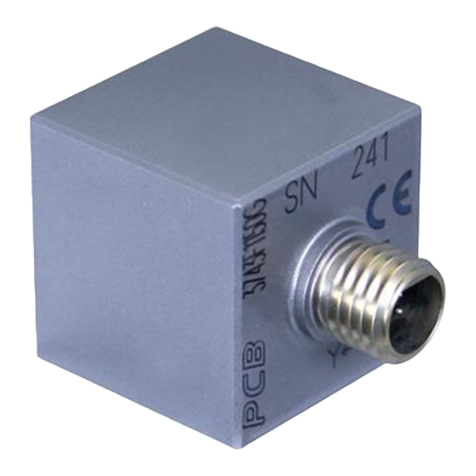
PCB Piezotronics
PCB Piezotronics 3743F1130G Installation and operating manual
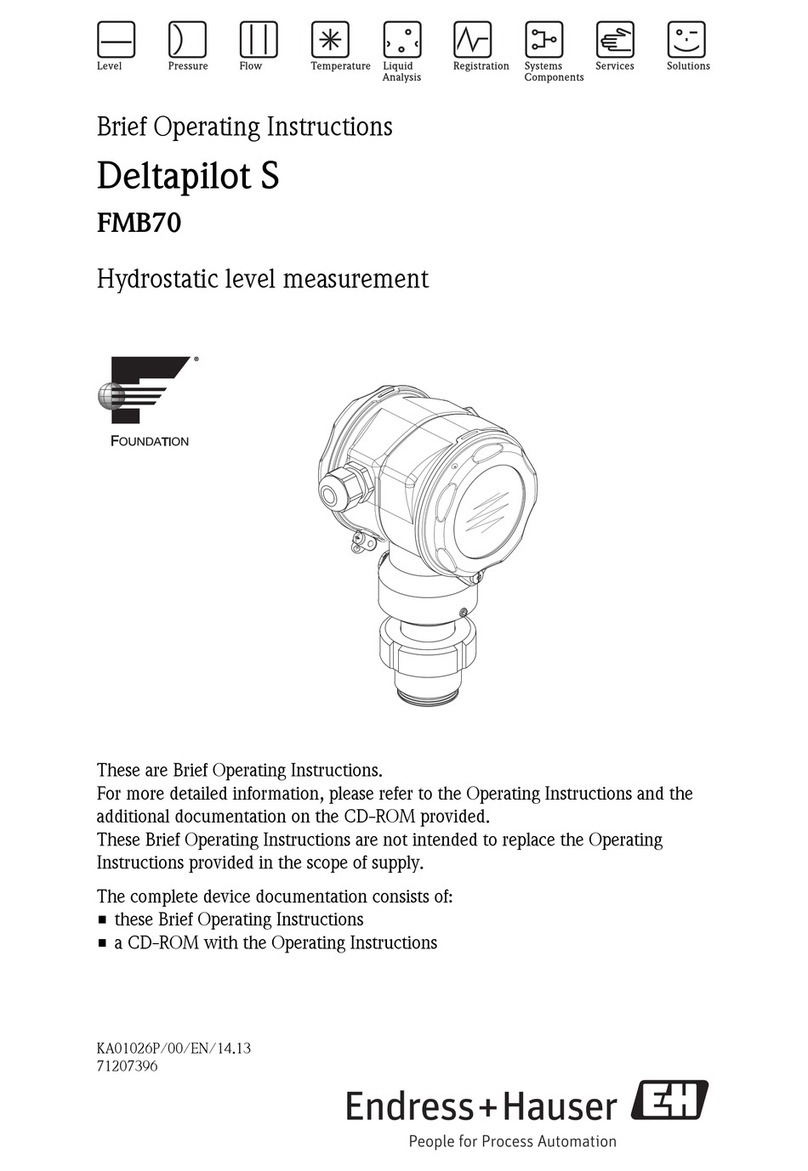
Endress+Hauser
Endress+Hauser Deltapilot S FMB70 Brief operating instructions

Carrier
Carrier Indoor Air Quality (IAQ) user manual
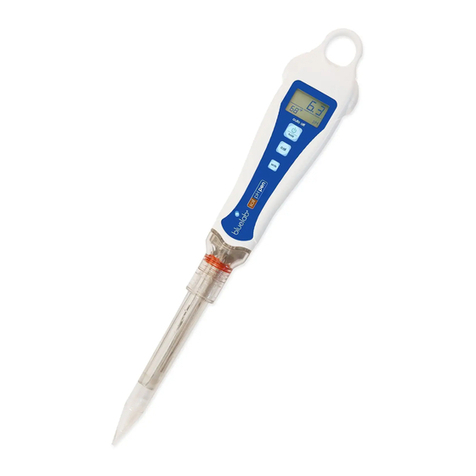
bluelab
bluelab Soil pH Pen Care and use guide


